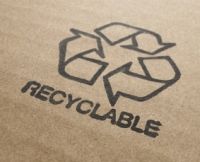

On 24 March 2020 the Department for Environment, Food and Rural Affairs (DEFRA) published two Consultations that aim to introduce drastic changes in how packaging waste is managed in the UK.
Both Consultations are open for responses until 4 June 2020.
Deposit Return Scheme
The first Consultation covers the introduction of a Deposit Return Scheme in England, Wales and Northern Ireland - Scotland has already introduced such a scheme in 2020, which will apply from 2022.
Under the new proposals, the producers and retailers of drinks containers made of PET plastic, glass, aluminium and steel cans would be required to take part in the take-back of the empty containers once they become waste. The scheme would require the retailers and producers to sign up to the Deposit Management Organisation and report on the amount of drinks containers produced and how much of it was recycled.
The producer will also need to pay a registration fee which will fund the Deposit Return Scheme.
The Government proposes to introduce legally-binding recycling targets for the containers covered by the Scheme and aims to achieve a 90% collection rate after three years from the introduction of the scheme.
The Consultation also covers technicalities, such as what the return points would look like, appropriate labelling of containers included in the Deposit Return Scheme to be easily identifiable by consumers and waste facilities, as well as addresses the possible issues where containers in scope are being collected in local authority waste streams and how they could be reimbursed for the costs of treating those containers.
The Consultation also proposes certain methods for achieving compliance and enforcing through environmental regulators.
Extended Producer Responsibility for packaging and packaging waste
The second Consultation proposes a dramatic reform of the waste system in relation to packaging waste and the introduction of the Extended Producer Responsibility schemes.
This Consultation proposes minimum recycling targets for a variety of materials, where an overall recycling rate for all packaging waste in the scope of the scheme would reach 73% by 2030.
The Government intends to implement placing the cost of managing packaging waste with the producers, which will involve:
The Government estimates that the initial packaging waste management costs that producers will be required to pay will be around £2.7bn in the first year of implementation.
For Extended Producer Responsibility, the Government proposes to introduce a single point obligation (for example a single producer is responsible for the cost of managing a piece of packaging), which will focus the obligations on those who are best placed to reduce the amount of packaging and increase the recyclability of the packaging they use.
This Consultation proposes that the fees that are to be covered by the producers of the packaging should be varied to reflect how easy the packaging is to recycle - easier to recycle will mean lower fees.
The Consultation also covers certain technical aspects, such as appropriate labelling that informs about recyclability which will be set out in the law, as well as other packaging types such as biodegradable and compostable packaging, plastic film and flexible packaging (such as carrier bags) and how this type of waste will be managed.
Other aspects of the scheme that are consulted on are the:
For more information on this subject, see: